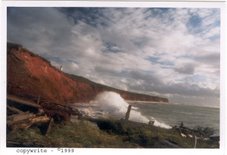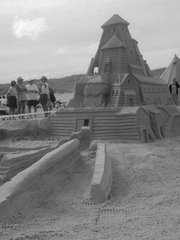Atlantic Snow Crab (Chionoecetes opilio)
 Atlantic Snow crabs are crustaceans and belong to the family of spider crabs, so-called because of their long, slender legs. Magdalen Islands fishermen originally marketed this species under the name queen crab.
Atlantic Snow crabs are crustaceans and belong to the family of spider crabs, so-called because of their long, slender legs. Magdalen Islands fishermen originally marketed this species under the name queen crab.The Islands fishery for these shellfish began slowly in 1967 after exploratory fishing efforts found abundant stocks in the Gulf of St Lawrence. Since that time, the fishery has developed rapidly and snow crabs rank with lobster and salmon among Atlantic Canada's top taste treats in fish products. It is economically valued second only to lobster on the Magdalen Islands and it's flavour value is gaining popularity amongst islanders.
Snow crabs have a flattened, almost circular body and five pairs of long spider-like legs, one pair of which is equipped with strong claws. The upper surface of the shell is orangery tan and the underneath is creamy white. When fully mature, males are twice as large as the females and average about 13 cm across the body shell. Average weight of these crabs in the commercial catch is .7 kg. In Canadian waters they are commonly found on the muddy or sandy sea floor at 75-450 meters deep.
In the Gulf, snow crabs are landed from May through September. Fishermen harvest snow crabs from 16-18 meters boats which have been converted from gill-netting, seining or dragging for groundfish. Each boat works about 35-80 square steel framed traps. These traps are baited, set singly and hauled daily by ropes which lead to surface buoys. The crabs are stored alive on ice in the boats hold.
A gourmet food item, snow crab meat is marketed in Canada, the United States and Europe as cooked frozen and canned meat.





No comments:
Post a Comment